20 Endangered Sea Animals That Desperately Need Our Help
From the massive whale shark to the culinary delight known as the bluefin tuna, these endangered marine animals are victims of overfishing, pollution, and habitat degradation.

As the number of endangered sea animals continues to rise, it’s important to understand the destructive role humans play in habitat degradation, pollution, and overfishing. It’s just as vital to assist in conservation efforts, which can be as simple as educating yourself about a species and spreading the word, or learning best practices for handling and releasing the animals you inadvertently catch.
Under the U.S. Endangered Species Act, about 2,270 marine species are considered globally threatened or endangered. Here, we outline 20 of the most fascinating creatures, why they’re in trouble, and how you can help.
More From Popular Mechanics:
🐡 Meet the 50 Weirdest Deep Sea Creatures Lurking Beneath the Waves
🌊 The World’s Oceans Are Dying Right Before Our Eyes
🐟 How the World’s Largest Freshwater Fish Grew to a Whopping 660 Pounds
Smalltooth Sawfish
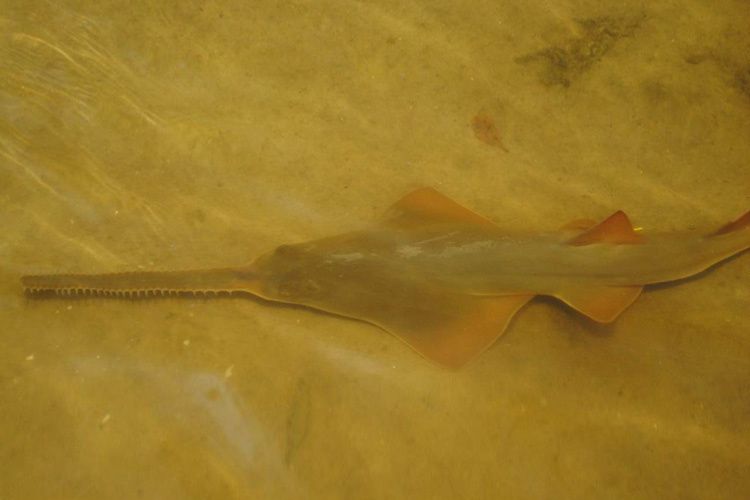
With its cartilaginous body and elongated snout, the strange-looking smalltooth sawfish appears to be a crocodile-shark hybrid, but it’s actually a type of ray. Found off the coast of Florida, these migratory fish prefer warm tropical waters. At one point in time, smalltooth sawfish could be found all throughout the Gulf of Mexico, from Texas to Florida, and up the East Coast to North Carolina, according to the U.S. National Oceanic and Atmospheric Administration (NOAA).
Status: Critically endangered
Why They’re in Trouble: Populations of smalltooth sawfish plummeted in the second half of the 20th century due to two primary factors: habitat loss and bycatch. As waterfront construction continued to flourish along Florida’s coast, the shallow estuaries where juvenile smalltooth sawfish like to nurse began disappearing. At the same time, fishermen were accidentally catching the fish in their nets, killing them rather than releasing them.
How To Help: If you’re a recreational angler, familiarize yourself with the guidelines NOAA Fisheries developed to safely handle and release smalltooth sawfish.
White Abalone
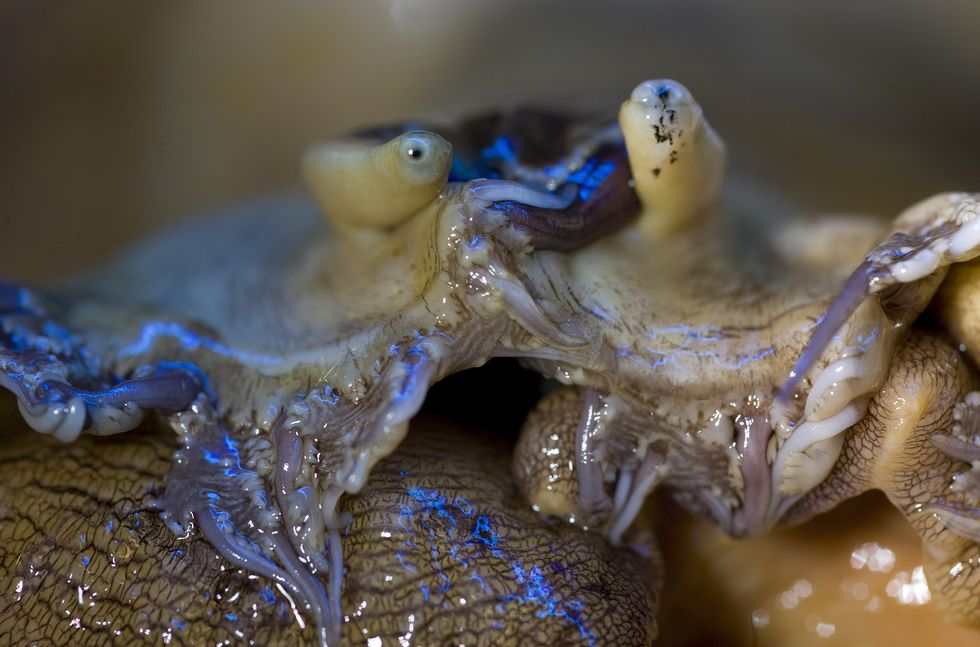
You may think of the white abalone as nothing more than the stuffing inside a pretty seashell, but this tasty mollusk is actually a type of plant-eating marine snail, according to NOAA—one that native people have been eating for thousands of years. Using its muscular orange foot, the white abalone attaches itself to rocks, feeding on algae and drifting kelp. In 2001, these bottom-dwellers became the first marine invertebrate listed under the Endangered Species Act.
Status: Endangered
Why They’re in Trouble: Commercial and recreational overfishing along the California coast in the 1970s is a primary culprit of the white abalone’s decline, and due to the creatures’s peculiar mating habits—they don't become sexually mature until they’re four to six years old—this had a lasting impact on its population. Meanwhile, the mollusks are also plagued with a disease called withering syndrome, which can attack the abalone’s digestive organs.
How To Help: Educate yourself: if you find or catch white abalones, you must safely release them. You can also make a donation to the Aquarium of the Pacific in Long Beach, California, which engages in research to increase white abalone populations.
Green Turtle
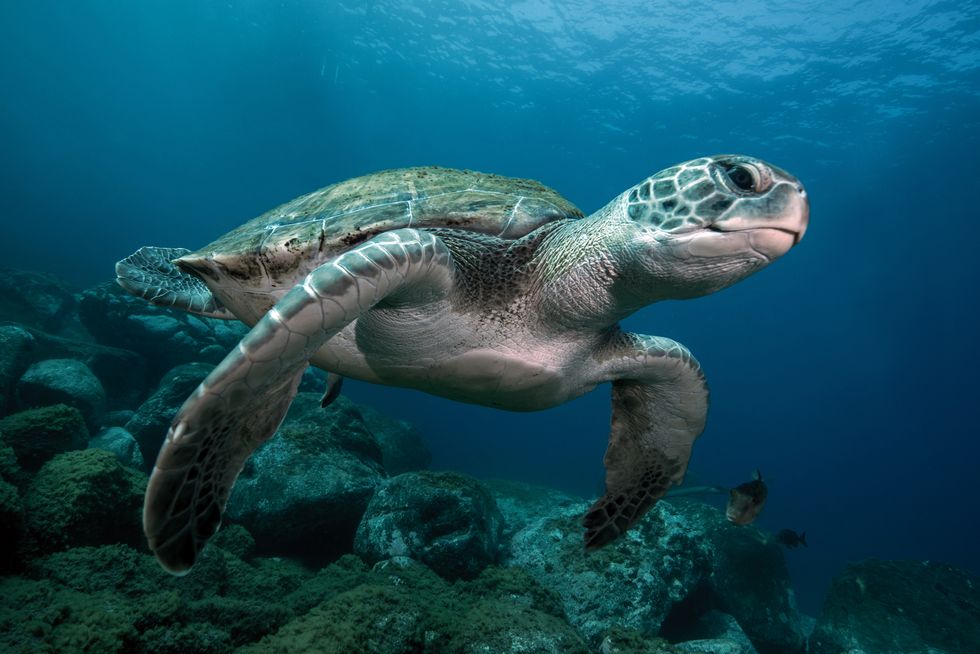
Encountering a green sea turtle in the wild is a truly breathtaking experience, and one that we may collectively experience less and less without continuing interventions to protect these large herbivores. Green sea turtles are named for the green color of their shells, which derives from the algae and sea grasses that they munch on. Found throughout the world—nesting in over 80 countries, and found living in the coastal areas of over 140 countries—these turtles have 11 distinct populations segments that are considered endangered.
Status: Endangered
Why They’re in Trouble: Because the green turtle is found in so many locales, it’s also subject to a number of threats: unintended capture in fishing gear, egg harvesting, nesting habitat degradation, vessel strikes, ocean pollution, warming climate, and disease.
How To Help: Even though this endangered sea animal faces so many threats, there are a ton of ways you can help. Reduce ocean debris by participating in clean-up projects, keep your distance from nesting sites, avoid driving on beaches, turn the lights off when staying near the beach to avoid distracting hatchlings, and report any turtles that you see in distress.
Vaquita
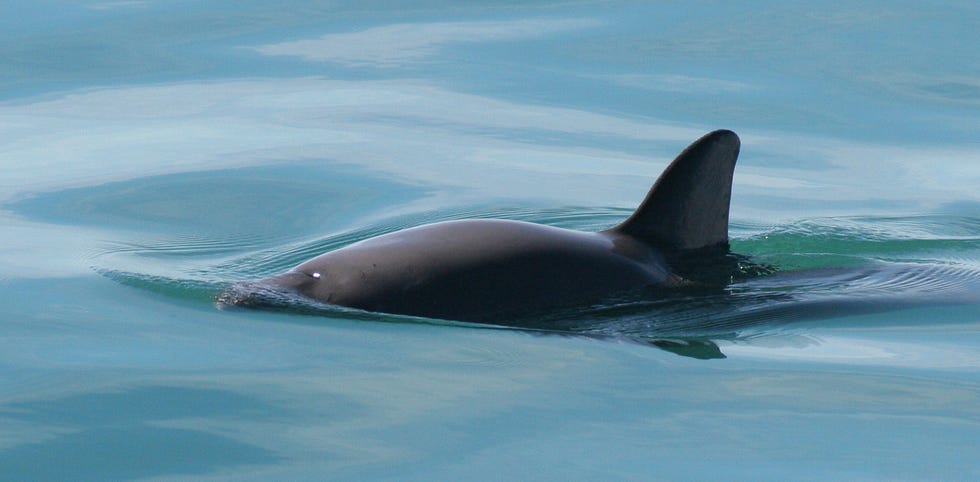
Sadly, this porpoise is the most endangered sea animal on this list, and of all the endangered marine animals period; in total, there are an estimated 20 vaquitas still living in the wild. These mammals grow to about four or five feet in length, and weigh between 65 and 120 pounds. The tiny remaining population is only found in the northern portion of the Gulf of California, per NOAA.
Status: Critically endangered
Why They’re in Trouble: The only known threat to the vaquita is entanglement in fishing gear. Gillnets—vertical panels of netting hung between buoys to create a wall—are the main culprit.
How To Help: Call the NOAA Fisheries Enforcement Hotline at (800) 853-1964 to report a marine violation, especially if you notice vaquita as bycatch.
Whale Shark
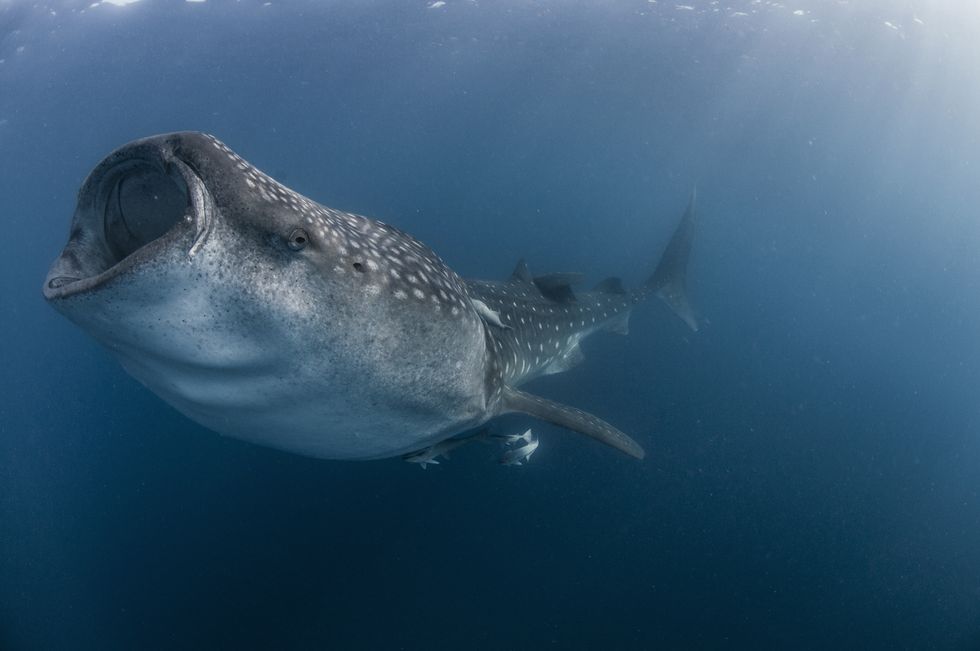
With the largest confirmed specimen coming in at 61.7 feet long, the whale shark is an absolute unit, and by far the world’s largest fish. Despite their size, these creatures are filter feeders, meaning they use their huge mouths to eat plankton and other small fish.
Status: Endangered
Why They’re in Trouble: The main threats to whale sharks are intentional fishing, bycatch in nets, and vessel strikes, but there are other local threats at play like oil and gas drilling.
How To Help: Consider adopting a whale shark through the World Wildlife Fund (WWF).
Marine Iguana
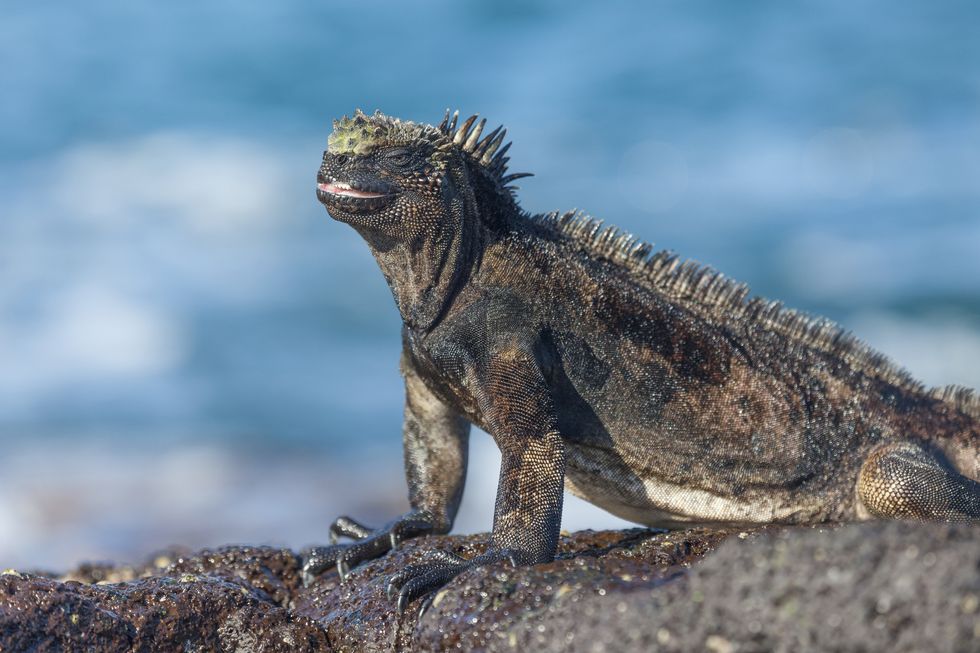
Like so many other peculiar creatures, the marine iguana is an endemic species of the Galápagos Islands. Unlike other iguanas, these lizards can dive in the water, where they forage algae.
Status: Vulnerable
Why They’re in Trouble: El Niño ocean cycles, oil spills, non-native predators
How To Help: Adopt a marine iguana from the World Wildlife Fund.
Finless Porpoise
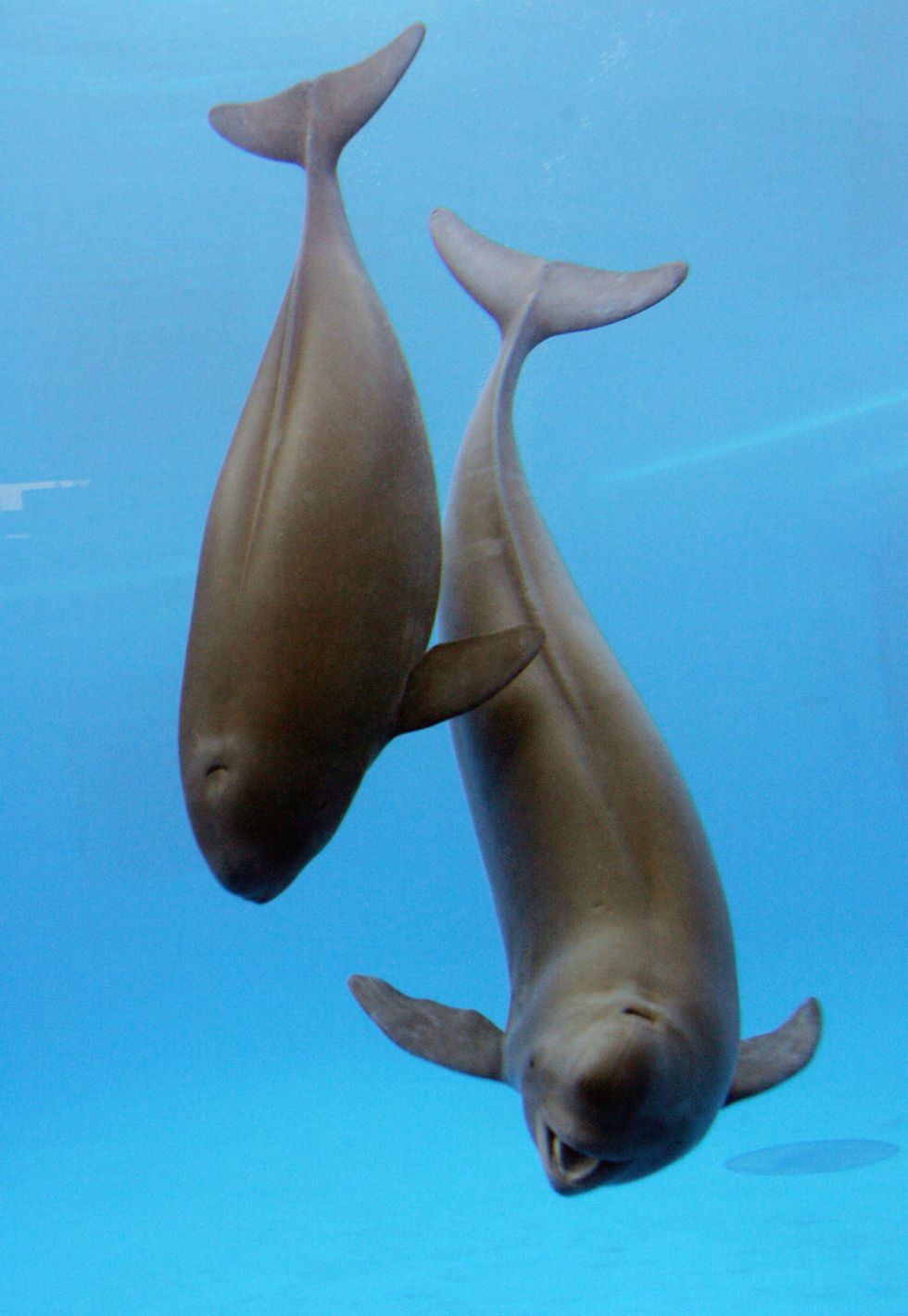
The finless porpoise is known for being incredibly intelligent and can be found in lakes and rivers in southeast and eastern Asia, notably the Yangtze. The WWF estimates that there are only around 1,000 to 1,800 finless porpoises left in the wild with that number continually dwindling.
Status: Critically endangered
Why They’re in Trouble: Illegal fishing, habitat degradation
How To Help: Donate to the WWF as it works to restore wetlands and reduce pollution along the Yangtze.
Dugong
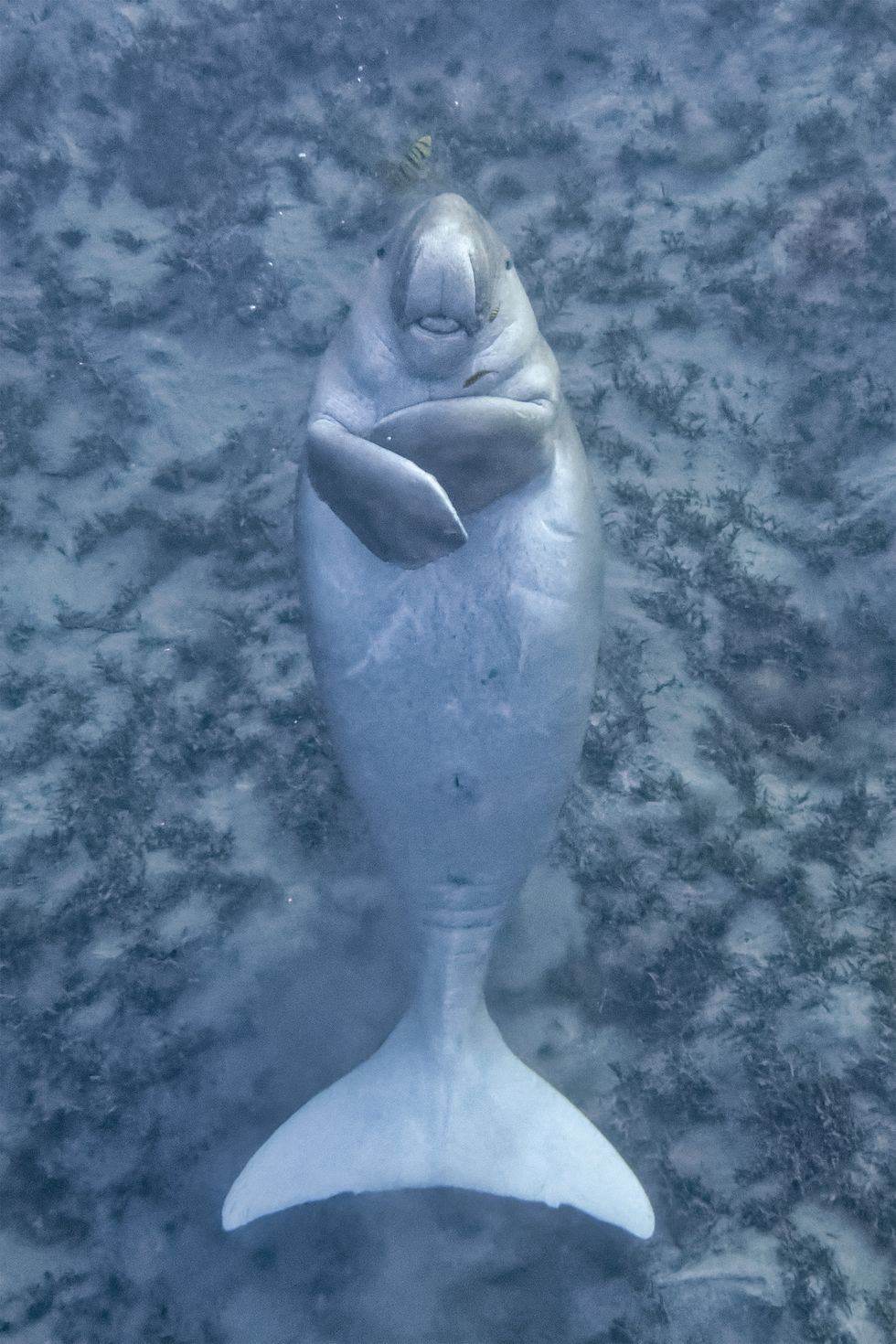
Although it’s similar in appearance to the manatee, the dugong is a different animal (even though both dugongs and manatees belong to the order Sirenia). Dugongs are friendly, gentle creatures who eat a vegetarian diet, and can reach up to 650 pounds as adults.
Status: Vulnerable
Why They’re in Trouble: Coastal development, loss of habitat and food (seagrass), and water pollution
How To Help: Adopt a dugong
Gharial
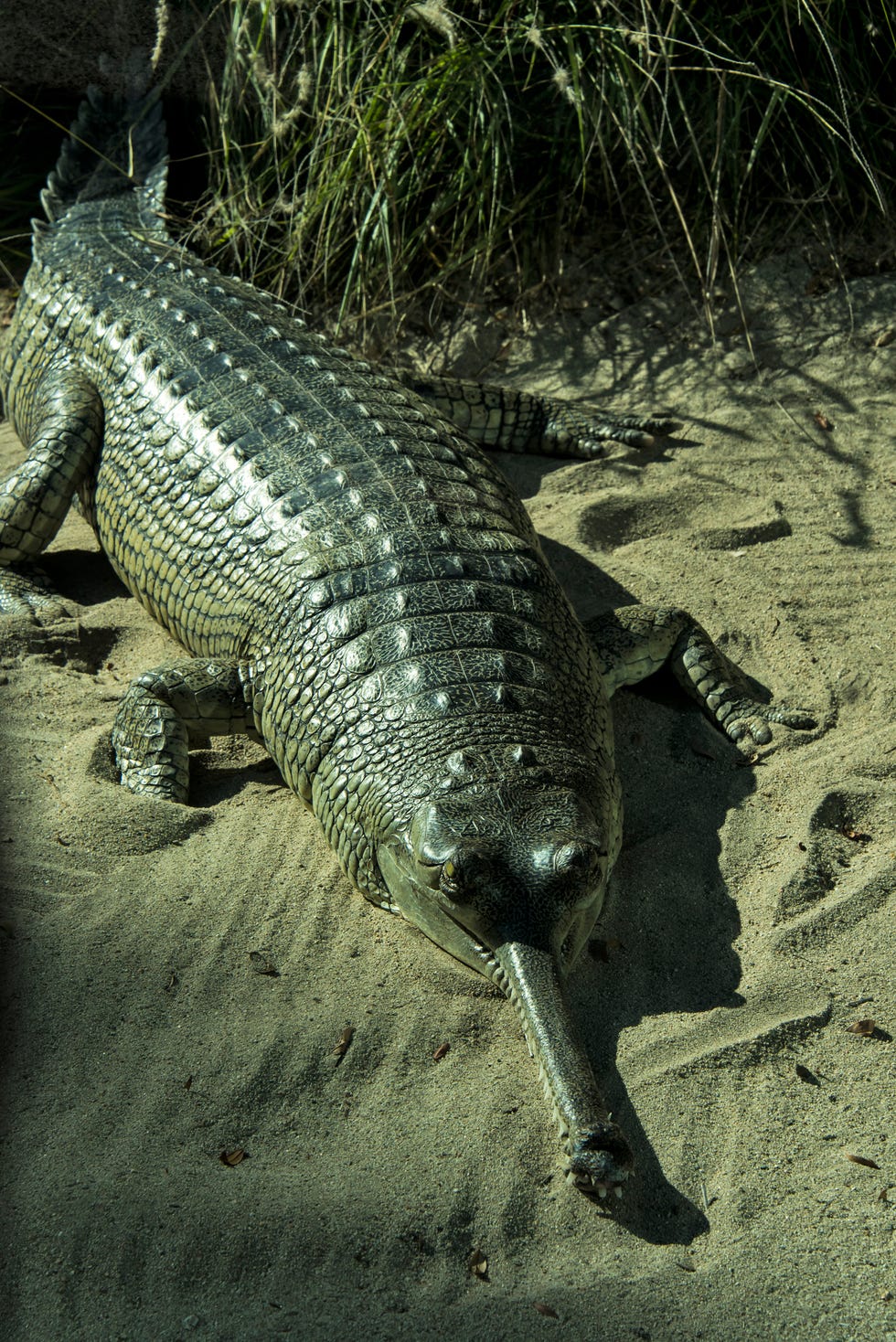
This gnarly-looking gharial is a crocodilian. Sometimes called gavials, they’re easily recognizable thanks to their elongated, narrow snouts. They thrive in freshwater systems, and National Geographic reports that though they were once found all the way from “Pakistan to Myanmar,” they are now only found in India and Nepal.
Status: Critically endangered
Why They’re in Trouble: Human hunting and changes to habitats (such as man-made dams) have threatened the creatures. Gharials need water to survive, and when something like a dam changes water availability, they may suffer as water becomes less and less accessible.
How To Help: Learn more about gharials and the research being done to ensure their conservation.
Bluefin Tuna
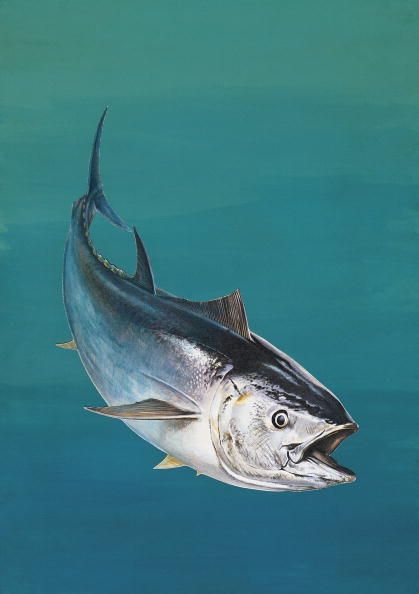
The most valuable fish in the world is in great danger. According to Oceana, the International Commission for the Conservation of Atlantic Tunas (ICCAT) estimates that as few as 25,000 individual mature bluefin tuna remain.
Status: Endangered
Why They’re in Trouble: The greatest enemy of tuna is overfishing, tuna ranching (when tuna are caught alive and fed for months before being exported), and loss of prey.
How To Help: Learn more about this fish and donating to the Center for Biological Diversity.
Cape Penguin
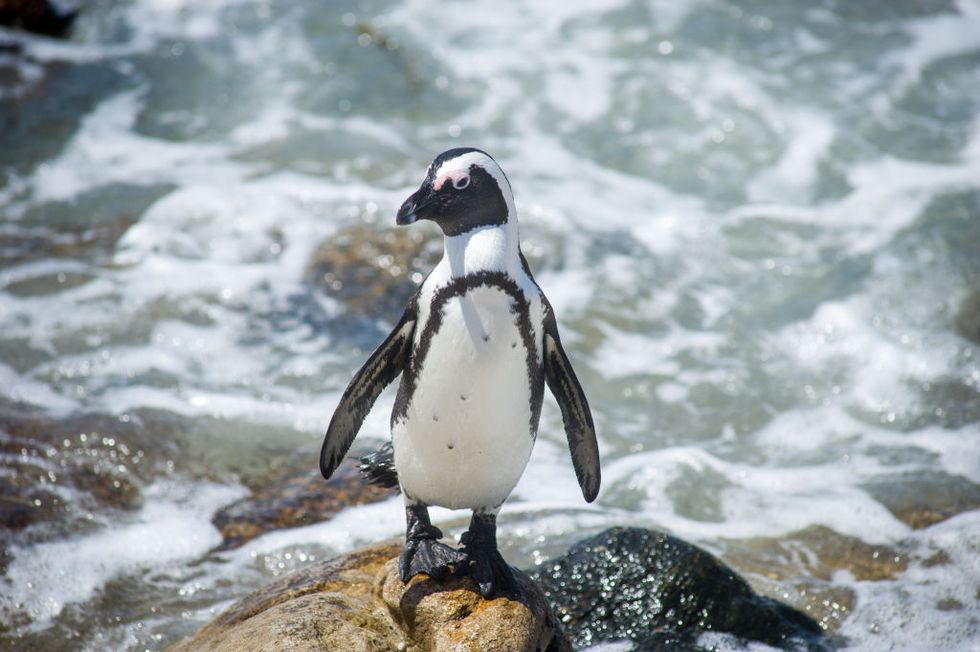
Cape penguins are also called “jackass penguins” and “black-footed penguins” due to their call, which sounds like a donkey neighing, and the color of their feet (obviously). This penguin breeds only in Africa.
Status: Endangered
Why They’re in Trouble: Loss of nesting sites, oil spills, and food loss due to overfishing are all major threats to the sea birds.
How To Help: According to the Monterey Bay Aquarium, you can support penguin conservation groups such as the Southern African Foundation for the Conservation of Coastal Birds (SAANCOB) and by using the Seafood Watch website to make sustainable seafood choices at restaurants and grocery stores.
Corals
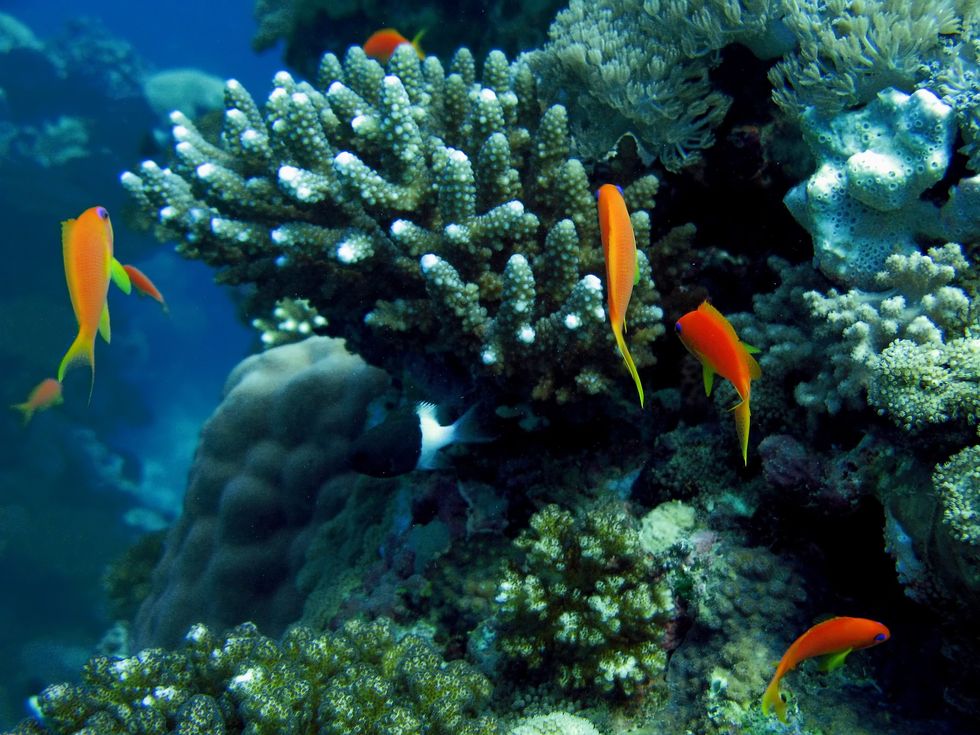
Don’t forget, coral is a sea animal, too, and an important part of the ocean’s ecosystem. Coral gives other sea creatures protection, plus a place to breed and spawn.
Status: Over 25 corals are listed as endangered or threatened
Why They’re in Trouble: This fundamental part of the ocean is incredibly sensitive; ocean acidification and bottom-trawling commercial fishing are its major threats.
How To Help: In order to conserve coral reefs, opt for sustainable seafood, save on water, don’t touch coral reefs when diving, and be mindful of the ingredients in your sunscreen as some of them may be deadly for reefs. Recycling also helps!
Gray Whale

Unique among whales for their dorsal humps (instead of fins), these 50-foot whales are also notable for their moans, growls, knocks, and other distinctive vocalizations. While gray whales near Baja California are thought to be friendly, the species is known worldwide for the fierceness with which mothers defend their calves.
Status: Endangered in Western North Pacific Distinct Population Segment; its eastern stock has been delisted
Why They’re in Trouble: Centuries of overfishing have left one population extinct (North Atlantic) and one critically endangered (Western North Pacific). The good news is that fishing restrictions have allowed the third population, in the Eastern North Pacific, to rebound to the point that it was removed from the U.S. Endangered Species List in 1994.
How To Help: Visit WWF and learn more about gray whales, donate, and adopt your own gray whale.
Hector’s Dolphin

With just 7,400 individuals believed to be alive in the coastal waters off New Zealand, the International Union for Conservation of Nature considers Hector’s dolphin a “red list” endangered species.
Status: Endangered
Why They’re in Trouble: Bycatch, pollutants, and boat disturbance
How To Help: Visit WWF to educate yourself on endangered species and donate to conservation efforts.
Humphead Wrasse
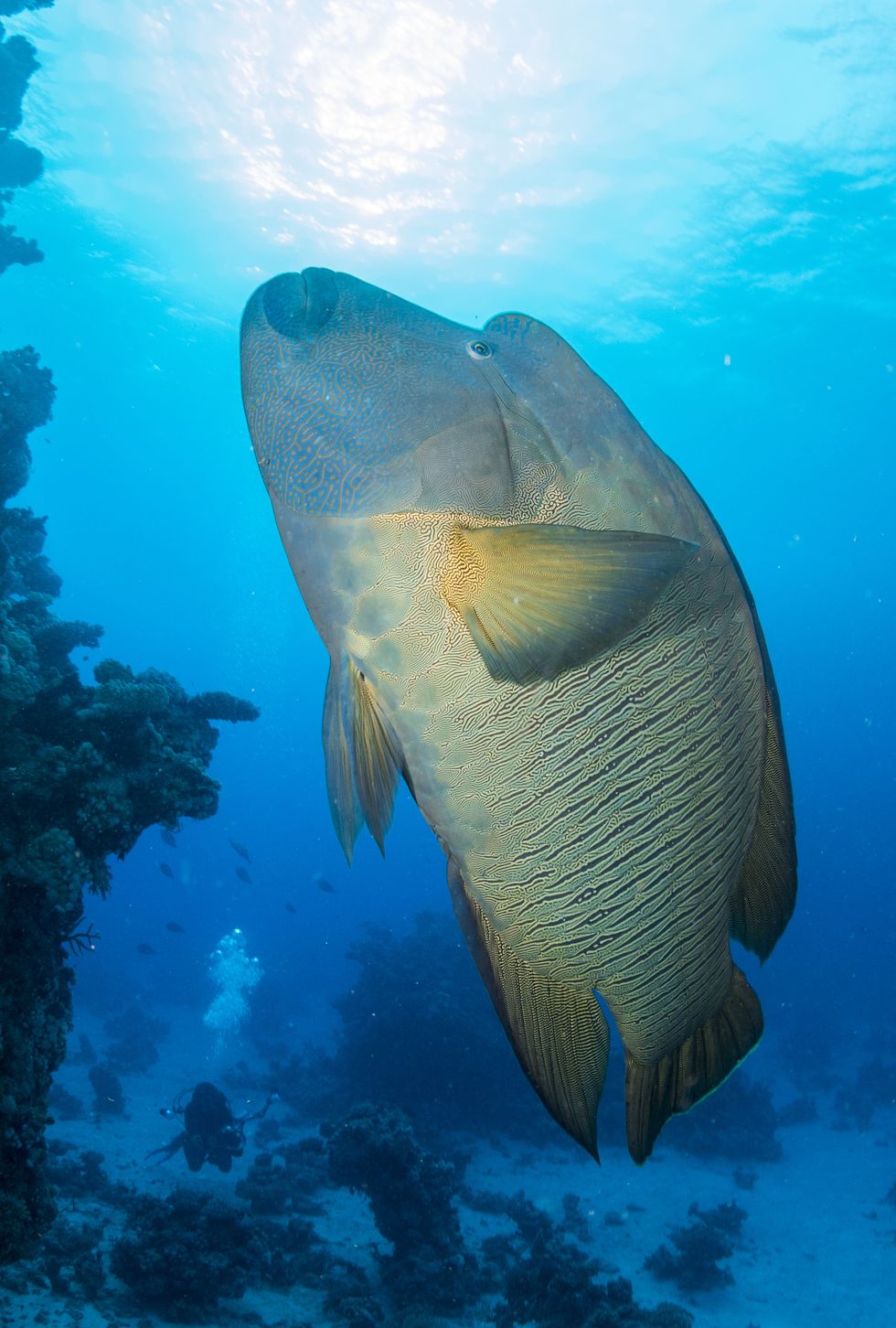
While it is also known as the Napolean fish, the humphead wrasse gets its name from an obvious anatomic feature. It’s one of the largest coral reef fishes, and can be found on reefs throughout the islands of the Pacific and parts of the Indian Ocean. Oh, and it’s hermaphroditic, changing from one sex to the other during the course of its maturation.
Status: Endangered
Why They’re in Trouble: Because the fish takes a long time to mature, it’s relatively rare to begin with, and it’s easy for fishermen to predict where it spawns, overfishing has been a problem for generations.
How To Help: Visit WWF and learn more about the humphead Wrasse and other endangered sea creatures.
Loggerhead Sea Turtles
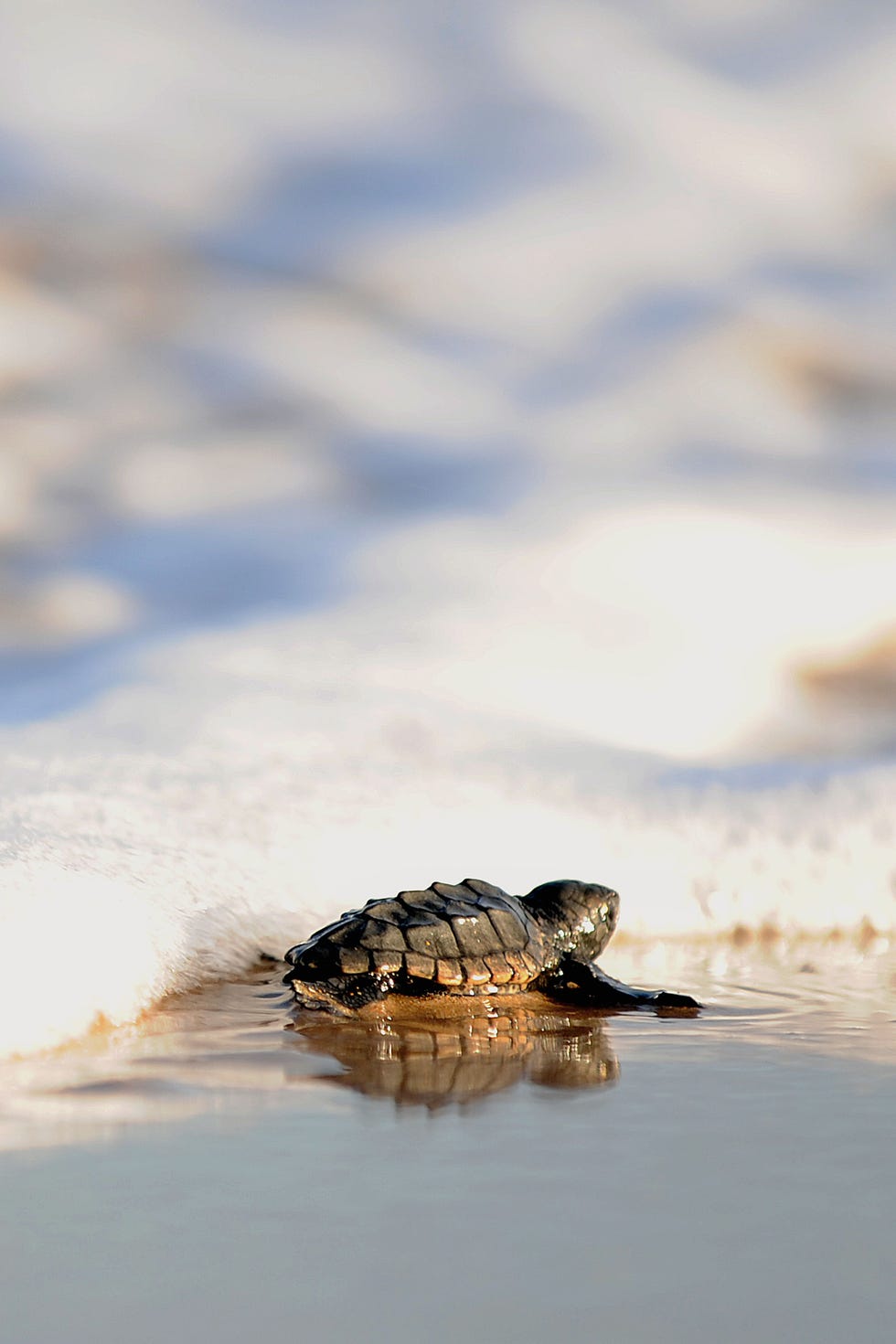
Loggerhead sea turtles are named for their huge heads, which contain the massive jaw muscles that help them munch on hard-shelled mollusks, according to NOAA. These endangered sea creatures are the most abundant nesting sea turtles in the U.S.
Status: Endangered or threatened, depending on the locale
Why They’re in Trouble: Fishing gear is the sea turtles’ worst enemy, but loss of habitat and climate change also play a role in putting these species in jeopardy.
How To Help: Reduce the amount of waste that gets thrown into the ocean. If you see a loggerhead—or other marine wildlife—in the wild, maintain a safe distance, and report any marine creatures in distress.
Manatees
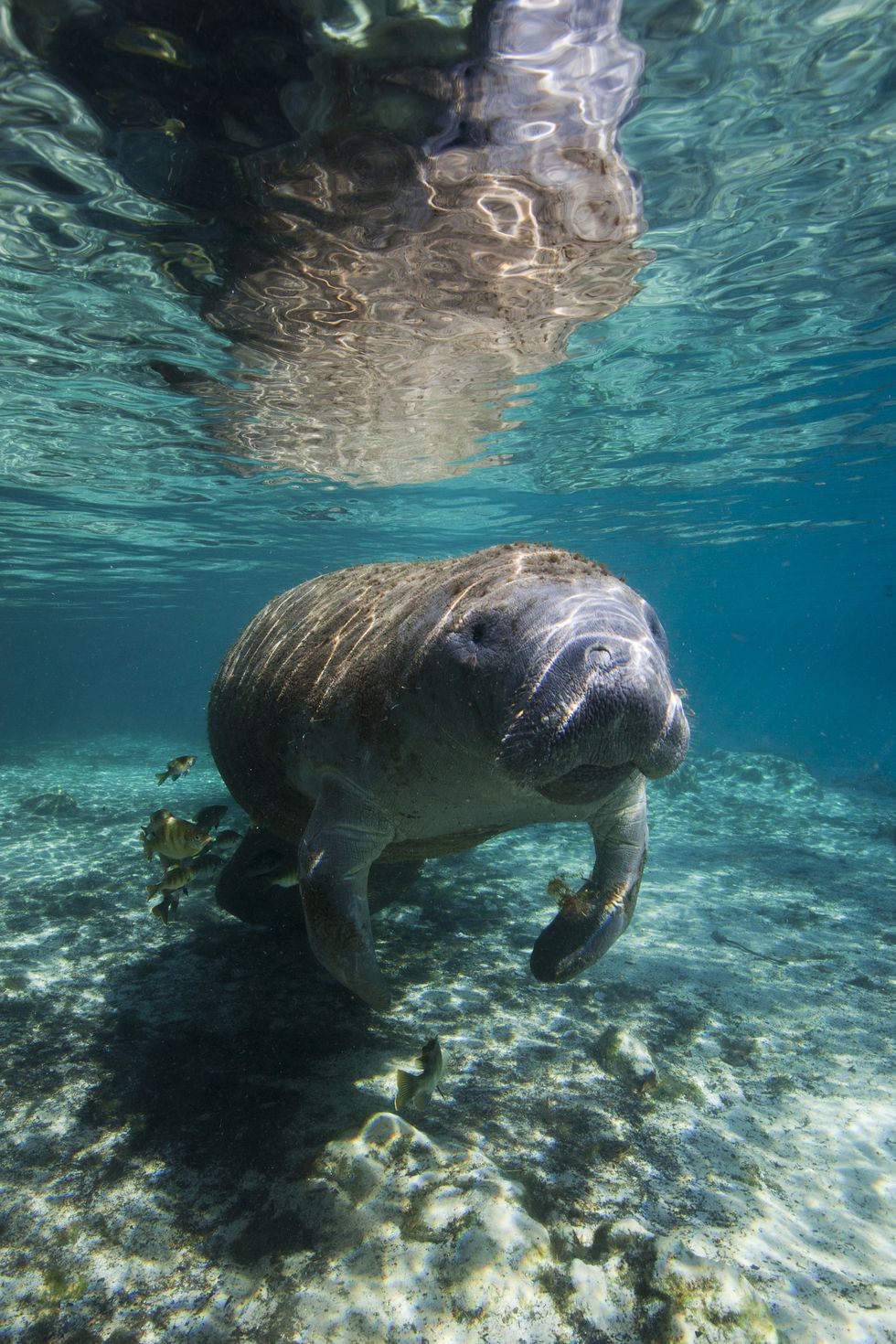
Resembling land mammals as much as any sea creature, the manatee is a gentle giant vegetarian. The world’s largest population of manatee is in Florida, but even there, fewer than 3,000 individuals are in existence.
Status: Threatened
Why They’re in Trouble: In addition to passing problems like the 2010 winter freeze that harmed manatees and other sea creatures in Florida, toxic algae (caused by human pollution), loss of habitat, and boating collisions all threaten the manatee.
How To Help: Visit Defenders of Wildlife and learn more about manatees and other endangered sea creatures.
Mediterranean Monk Seal
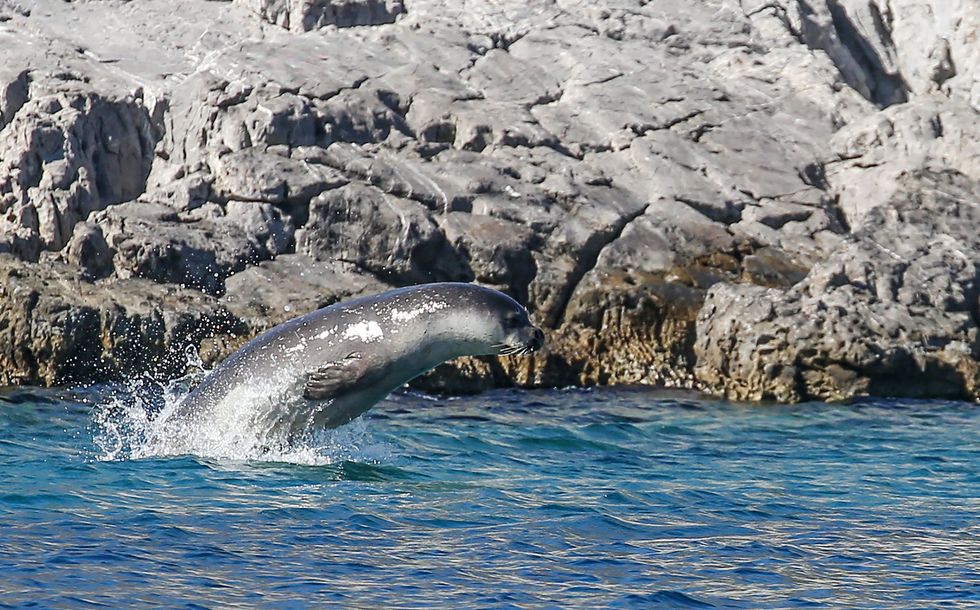
One of the six most endangered mammals in the world, according to WWF, the Mediterranean Monk Seal once ranged from Portugal to Senegal. Today, just 500 remain in isolated clusters.
Status: Critically endangered
Why They’re in Trouble: Hunting, habitat destruction, pollution, depletion of fish stocks, and competition with fishermen all factored into the decline of the Mediterranean Monk Seal. Other seals, however, may be threatened by global warming, as Arctic and Antarctic habitats change rapidly.
How To Help: Visit WWF and learn more about seals and other endangered sea creatures.
Chinook Salmon
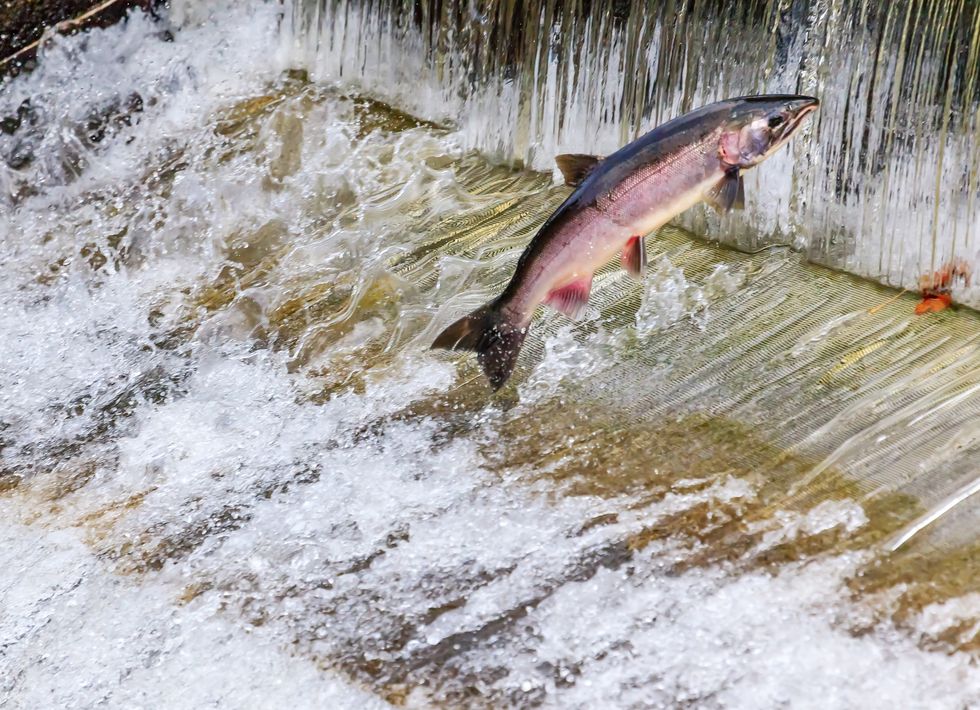
Salmon, the most popular seafood and sport fish in the world, are in danger. Wild salmon sales support many communities around the world, but these fish need clean rivers and oceans to survive.
Status: Two species are endangered, seven are threatened
Why They’re in Trouble: Chinook salmon (also known as king salmon) from Alaska to California are in decline, and pollution, global warming, and bycatch are to blame.
How To Help: Learn more about habitat conservation and regulatory actions.
Southern Sea Otter
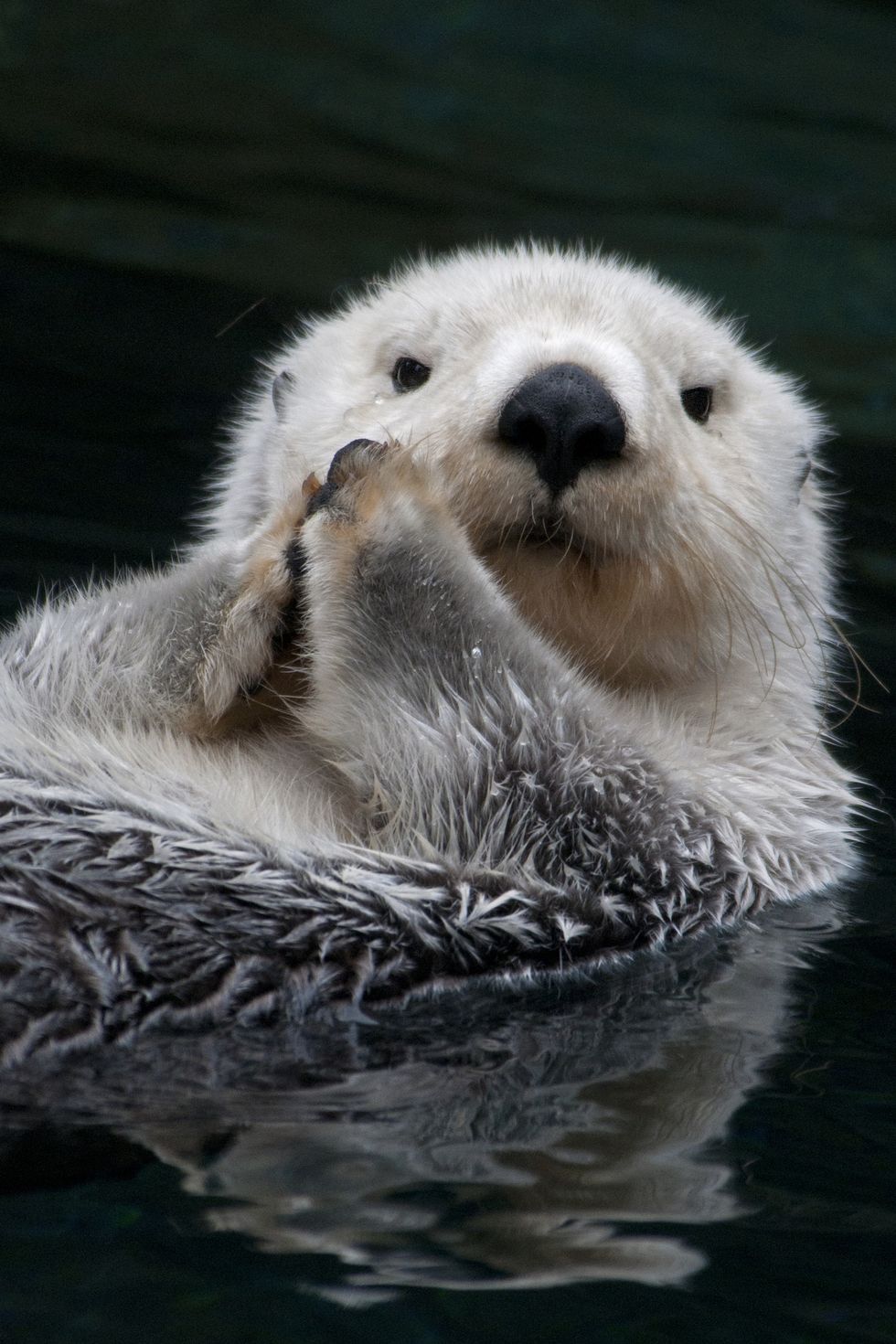
With the densest fur on the planet, sea otters survive in cold waters without the blubber layer that insulates other marine mammals. They also need to eat a lot to keep warm: they consume up to a quarter of their body weight every day. While northern sea otters, found off the West Coast of the U.S. from Alaska to Washington, have a robust population of roughly 77,000, fewer than 3,000 southern sea otters live off the coast of California.
Status: Endangered
Why They’re in Trouble: The biggest threats to sea otters came in the past, when the fur trade caused their numbers to drop from more than 1 million to fewer than 2,000. Ongoing threats include oil spills, habitat loss, food limitations, disease, entanglement in fishing gear, and conflict with shellfish fisheries (since otters like mussels, clams, crabs, and other seafood that humans enjoy, too).
How To Help: Visit Defenders of Wildlife and learn more about otters and adopt your own.
Watch Next


The CIA’s Secret Plan to Turn Psychics Into Spies

The Universe Could Be Eternal, This Theory Says

Immortality Is Impossible Until We Beat Physics

How Vacuum Energy Could Help Us Reach Light Speed







